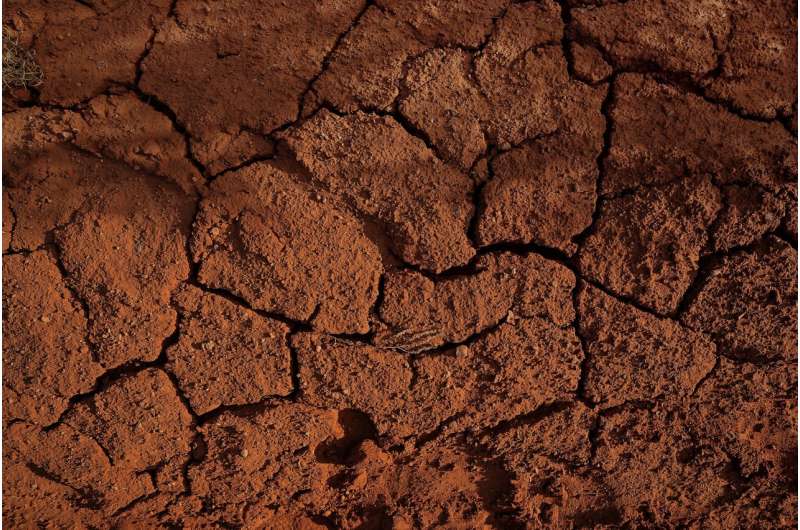This article has been reviewed according to Science X's editorial process and policies. Editors have highlighted the following attributes while ensuring the content's credibility:
fact-checked
trusted source
written by researcher(s)
proofread
These tiny worm-like creatures in the soil can destroy pests but they can also kill crops—an expert's guide to nematodes

Whether you're a gardener growing food for your household, a small-scale farmer or a commercial producer, soil matters. You cannot really tell the difference between healthy and unhealthy soil just by looking at it. But there are organisms in the soil— creatures you can't see with your naked eye—which scientists use to measure soil health.
Nematodes are among the creatures that scientists look for. These multicellular, wormlike animals differ from most other organisms in the soil, such as bacteria and fungi, which are single celled. Nematodes are equipped with a digestive system. They're also transparent, making it easy for scientists to examine their feeding habits.
I study nematodes to use as biological control agents and also represent Stellenbosch University, South Africa, in the NEMEDUSSA project. This is a consortium of 16 research and educational institutes across Africa and Europe that work on and study nematodes. We want to increase awareness, research and teaching about nematodes, especially in agricultural disciplines.
We also believe it's important for everyone, especially those working in the agricultural sector, and even just casual food gardeners, to know about nematodes. If you grow tomatoes in your garden, for instance, root-knot nematodes can cause total crop failure.
Four main types of nematodes occur in soil. Each group has expert scientists studying their behavior and how they can be managed in agricultural practice to minimize the amount of damage they cause.
Free-living nematodes
Free-living nematodes are non-parasites. They tend to feed on almost anything in the soil, including fungi, bacteria and other nematodes. In fact, without these free-living nematodes, soil is regarded as biologically dead and unhealthy for plant growth.
Plant-parasitic nematodes
The unchecked build-up of plant-parasitic nematodes in unbalanced soil is every farmer's nightmare. Such nematodes feed through a needle-like stylet, which they use as a syringe for obtaining food from the roots of plants. They have adapted their lifestyle from feeding on the outside of the root to inside it, where they are protected against the harsh soil environment.
Plant-parasitic nematodes can never be fully controlled. However, researchers have developed ways to keep them from multiplying to damaging levels. These techniques include planting crops that are resistant to specific nematodes or rotating with crops that the nematodes do not like.
Entomopathogenic nematodes
Entomopathogenic nematodes as biological control agents are my special interest. They are plant allies. They feed on pest insects such as larvae and pupae that are in contact with the soil, rather than on plants. Researchers recommend that every farmer or food gardener should have entomopathogenic nematodes present in their soil because they help to keep insect numbers low. Yes, you can buy them: they're available commercially, including from some South African companies.
Slug-parasitic nematodes
Many slug species are in close contact with soil, so certain nematodes have adapted their feeding habits over millions of years to feed on slugs, as well as some snails.
Researchers realized that the slug nematode could be used as a biological control agent. Biocontrol involves using living organisms like pathogens or insects to control pests, rather than using more environmentally damaging chemical products.
A commercial product, available under the trade name Nemaslug, was created in 1994 which harnessed the slug nematodes' feeding habits for biocontrol. But it's only available in Europe: research is ongoing to identify whether the nematode species used in the commercial product is found in South Africa and whether it's non-toxic to local endangered mollusks.
Monitor soil health
My advice to gardeners and farmers, even those working at a small scale, is to regularly send soil samples for laboratory testing. This will allow you to find out what sorts of nematodes are living among your tomato plants—the "good guys" who take care of pests, or the plant parasites. There are a number of private companies (Nemlab is one example) in South Africa to do these sorts of analyses and offer advice based on the results.
Provided by The Conversation
This article is republished from The Conversation under a Creative Commons license. Read the original article.![]()




















